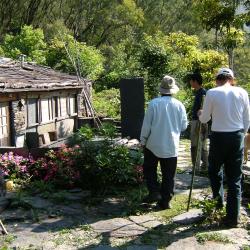Attractions along Wutai Haocha Historic Trail
Haocha was originally called Kochapongan, and it was recorded as "Jia Zhebangan" or "Jiapogan" in Qing Dynasty documents, and it was recorded as Koetapongan in the Dutch indigenous household records. After the Liberation of Taiwan, the place was renamed “Haocha” or transliterated as “Guchabu’an”. It is the center of the original settlement of the Rukai people in the west and includes Wutai, Ali, and other settlements, which all stemmed from it. Regardless of the historical background or cultural tradition, they all occupy a very important position.
- - / -
- - - -
- -
- -/-
- -
古道地圖
沿途景點所在位置
沿途景點所在縣市
屏東縣
沿途景點所在鄉鎮
霧臺鄉


